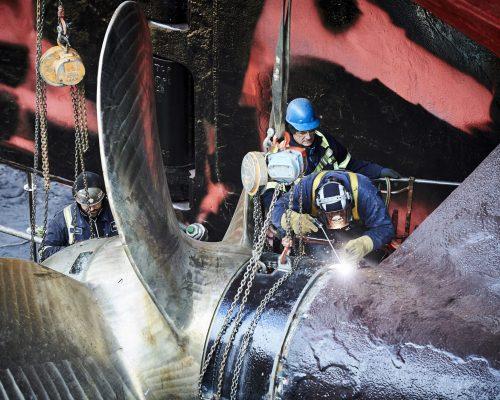
The pandemic is not yet over, but as governments develop their “what next” plans for economic stimulus, inland and coastal shipping is ready and able to help Canada and the United States reinvigorate trade, rebuild industries and return millions of people back to work.
Great Lakes-St. Lawrence shipping has long been vital to the success of the agricultural, manufacturing, mining, construction and energy sectors. It annually transports more than U.S.$77 billion (CDN$100 billion) worth of goods and supports hundreds of thousands of jobs.
Marine also offers critical public interest benefits as the safest and most fuel and carbon efficient transportation mode. Governments are faced with difficult choices on which stimulus measures will be most effective in unprecedented times. Now more than ever, they will need reliable, smart initiatives that meet multiple objectives and do the greatest amount of good.
Great Lakes-St. Lawrence shipping has demonstrated for many years that it is a safe ‘port in a storm’. We believe these proposals will help strengthen the supply chain, support the success of multiple industry/user sectors and set up Canada and the United States for an innovative, safe, efficient and environmentally smart future.
Investing in port and waterway infrastructure helps to eliminate transportation bottlenecks and increase and diversify both cross-border and global trade opportunities for North American businesses.
When governments modernize critical infrastructure, it attracts matching private sector investment and gives companies confidence to expand their activities and create new jobs.
Above normal precipitation has led to high water levels across the Great Lakes region during recent years, causing damage to port infrastructure, marinas, shoreline businesses and residential properties.
High water levels on Lake Ontario and mitigation measures attempting to protect against flooding have also led to disruptions to the St. Lawrence Seaway shipping season costing the U.S. and Canadian economies multi-million dollars in lost economic activity. Investing in climate resiliency measures will be essential to the future economic success of the Great Lakes-St. Lawrence region and all of its stakeholders.
Ships are the most fuel-efficient and carbon-friendly way to move goods and an important part of the solution to address climate change. The shipping industry, which contributes less than 0.59% of all GHG emissions in Canada, is working hard to further reduce its carbon footprint with smart fuel monitoring systems, more energy efficient ship and engine designs, and adoption of alternate fuels such as LNG or biofuels to power some of their vessels.
But ultimately, alternative propulsion systems that have zero carbon emissions are needed in order to meet long-term goals. With no such systems available for large commercial vessels, more research and development is needed.
Coast Guard icebreaking services on our coasts, inland waterways and the Arctic ensure that communities in Canada and U.S. continue to receive their daily essentials and goods even during seasonal cold-weather periods.
Icebreaking also ensures that ice formation on lakes and rivers do not cause ice jams and winter flooding and damage critical infrastructure like bridges.
However, in recent years, delays to shipping have been caused by insufficient icebreaker vessels, unexpected breakdowns and repairs from aging icebreaker fleets, and growing unpredictable weather events increasing icebreaking demands.
Economists calculated the U.S. economy alone suffered a $1 billion hit due to a lack of icebreaking resources in the Great Lakes during the 2018-2019 winter. Every delay in the Great Lakes-St. Lawrence region also costs Canada, an estimated $400,000 in lost business revenues per ship, per day.